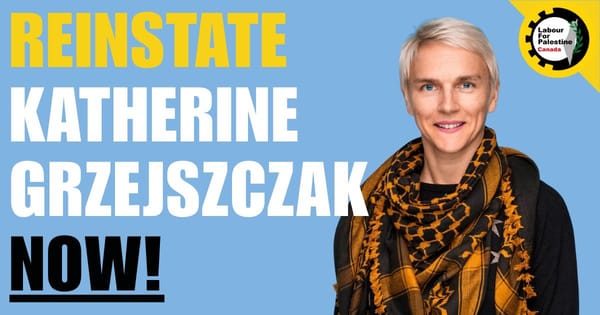
Acouple of weeks ago, Jacinda Ardern’s government in New Zealand released its plan to introduce sectoral bargaining, a labour law that allows unions to negotiate contracts covering whole industries rather than individual workplaces.
The New Zealand system will be structured around what the government is calling “Fair Pay Agreements.” These contracts will outline minimum wages and working standards for all workers in a designated sector or occupation, and once ratified will have the force of legislation.
Under the new plan, a union (or unions working together) can apply to the Minister of Business, Innovation and Employment (MBIE) to begin a bargaining process in any industry where the union is able demonstrate 10 per cent worker support or has 1,000 members, whichever is lower. Alternatively, if this criteria isn’t met, the MBIE can allow sectoral bargaining to move forward in any sector where union contracts are deemed to be in the “public interest,” for example if the industry is characterized by persistently low wages. This new sectoral bargaining arrangement is meant to complement current collective bargaining in New Zealand, which is based on worksite level bargaining similar to Canada.
Importantly, one of the rationales the government in New Zealand offered for introducing sectoral bargaining — apart from addressing falling union density and wage stagnation — was to create uniform wages and standards across industries in order to prevent employers from competing through reducing labour costs.
As I mentioned in a previous Class Struggle edition, many labour advocates have long pushed for using labour law in this way to take wages and basic working conditions out of competition. Employers in labour intensive sectors will consistently choose low wages over investment and innovation if left to their own devices. It’s promising, therefore, to see that Ardern’s government seems to be coming around to the idea that broad collective bargaining coverage can be used to force employers to choose investment and innovation over low wages.
The New Zealand proposal is far from perfect, but it points to one possible way to address low levels of union coverage and rising wage inequality in the Anglophone world. Unlike most other developed capitalist economies, the Anglo countries — the United Kingdom, Australia, New Zealand, but particularly the United States and Canada — have labour relations systems wherein unions bargain at the workplace level. Even large union locals typically must bargain separate collective agreements for each specific worksite.
This cumbersome system of decentralized union representation is a relic of the postwar “class compromise.” For example, in the U.S., New Deal policy makers introduced labour legislation in the mid-30s under pressure of growing strike activity and class struggle. However, the form that the eventual National Labour Relations (or Wagner) Act took largely favoured male, industrial workers.
Because the Wagner Act stipulated worksite level bargaining units, unions found it easier to organize large industrial workplaces whose workforces were mostly male. Female workers, overwhelmingly concentrated in smaller and labour intensive firms, found themselves largely shut out of the organized labour movement and reliant on minimum employment standards laws that provided only the minimum wage and marginal protections against excessive hours and other poor working conditions. The story in Canada was much the same, only a decade later.
As neoliberalism became ascendent and corporations pursued deindustrialization in the Global North, attacks on labour’s strongholds increased and precarious forms of employment grew. Consequently, nonstandard forms of feminized work came to typify larger segments of the labour market, and organizing unions in new workplaces became much more difficult.
We have been living with the legacy of this highly gendered system of labour law ever since.
It’s no surprise then that many labour law reform advocates, industrial relations scholars and some unions have called for sectoral bargaining as a response.
In most European countries — notably in the Nordics — sectoral bargaining is the norm and sets much higher minimum conditions across industries, even if unions negotiate contracts and represent workers at the enterprise level as well. The stark differences between countries where sectoral bargaining has long been standard practice and North America is evident in the higher average standards of living among workers and the lower overall levels of income and wage inequality.
However, the superiority of a sectoral bargaining model is perhaps most apparent when comparing union density between the Nordics and the U.S. and Canada. The percentage of workers in the U.S. who are members of unions stands at a measerly 10.8 per cent. In Canada, union density is held more or less steady by a public sector union membership of around 78 per cent. With a low private sector density of just under 16 per cent, only around 31 per cent of Canadian workers are union members.
Contrast these figures with union membership and collective agreement coverage in the Nordics: In Norway, 69 per cent of workers have union coverage. In Denmark, the figure is 82 per cent. While in Sweden and Finland, 88 and 89 per cent of workers enjoy the protection of a union collective bargaining agreement, respectively. In fact, if you run through the figures, high union density and contract coverage is strongly correlated with sectoral bargaining models. No country with a decentralized system of union representation like Canada’s has ever had a majority of workers in unions.
However, it’s one thing to point out the clear advantages of a policy framework and quite another to actually chart a path to its implementation.
Opposition to sectoral bargaining comes from several fronts. Obviously, most employers are opposed, particularly in countries where employers are not typically organized into their own member associations (getting them into these would be necessary in order to have an employer side bargaining agent to negotiate contracts covering whole sectors).
Because sectoral bargaining models, at present, would most benefit workers in low wage industries, such as retail, food and hospitality and homecare, employer opposition from these sectors would be considerable. Overcoming this would require solidarity and coordination from the broader labour movement, including from unions and union members who wouldn’t stand to benefit much from a broader-based bargaining system.
In Canada, while certain unions support sectoral bargaining, the labour movement isn’t uniformly behind the proposal. Moreover, extensive union coordination would be needed to actually make the system work once achieved. With prominent unions pulling out of the Canadian Labour Congress — not to mention shameful instances of raiding — it’s safe to say that Canadian labour is some distance from that level of concerted action.
Nevertheless, there are promising proposals being advanced by North American proponents of sectoral bargaining.
Clean Slate for Worker Power, a project at Harvard Labor Law Schools’ Labor and Worklife Program, has developed a set of labour law reform proposals with sectoral bargaining at the centre. The Clean State authors emphasize that a system of labour law as broken as that of the U.S. necessitates rebuilding from the ground up.
The labour law scholar, Kate Andrias, on the other hand, has produced historical research showing how New Deal policy makers understood the Fair Labor Standards Act (FLSA) to be a basis for extending bargaining rights to greater numbers of workers across hard to organize sectors unlikely to ever unionize under the National Labor Relations Act. It wasn’t inevitable, according to Andrias, that the FLSA would turn out to be a weak piece of minimum standards legislation providing little protection to non-union workers. From this history Andrias maintains that there’s a tradition of sectoral regulation on which to draw in reforming contemporary labour law away from our decentralized, workplace level model.
However, the appeal of sectoral bargaining has been tarnished somewhat recently, as tech companies such as Uber and Lyft have latched onto a bastardized version of the proposal, which would help them continue to keep their drivers classified as independent contractors. The basic idea would be to grant some unions limited bargaining rights on behalf of gig economy workers in exchange for unions accepting that those workers would remain “independent contractors,” and thus forgo any rights or protections afforded through minimum employment standards laws (which only protect “employees”).
Riding on the wave of success after Proposition 22 in California carved app-based companies out of stronger legislation that would have classified gig workers as employees, Uber, Lyft and other tech giants are seeking to create their own model of shame labour negotiation. Much like Uber’s Flexible Work+ proposal in Ontario, gig economy sectoral bargaining holds out the carrot of some minor benefits and pay guarantees for workers while continuing to use the stick of classifying app-based workers as “independent contractors,” denying them basic employment standards protections and access to unemployment insurance and public pensions.
As the authors of a much-read position paper against this plan point out, no system of sectoral bargaining that seeks to empower workers can have as its basis negotiating below what are already minimum standards.
Although unions such as the Teamsters in the U.S. and Unifor in Canada have been heavily criticized for entertaining these proposals, we also have to recognize that the labour movement finds itself in an extremely tough spot when it comes to these issues. Tech companies are on a major offensive, geared toward extending contract labour into further reaches of the economy.
The choice, as some labour leaders see it, is between trying to accommodate this in order to gain some minor leverage and have a seat at the table, or risk seeing the spread of unprotected contract labour into more of the economy without collective bargaining or minimum employment standards protections. Unions are understandably worried that if they don’t negotiate some middle of the road compromise, Uber, Lyft and the rest of the tech giants will write the laws without them. At a time of historic labour weakness, it’s a reasonable fear.
Yet, we can’t let this capitulation take place. There is no doubt that the future of the North American labour movement necessitates some form of sectoral bargaining. Indeed, if we ever want to see a system in which the majority of workers have the protections of a union contract, we must embrace broad-based bargaining that raises wages and standards across industries.
But those who may be hesitant have a point: policy on its own won’t cut it, especially if it’s emanating from our enemies. Winning meaningful sectoral bargaining requires building working-class power and strengthening union democracy as the indispensable first step.






